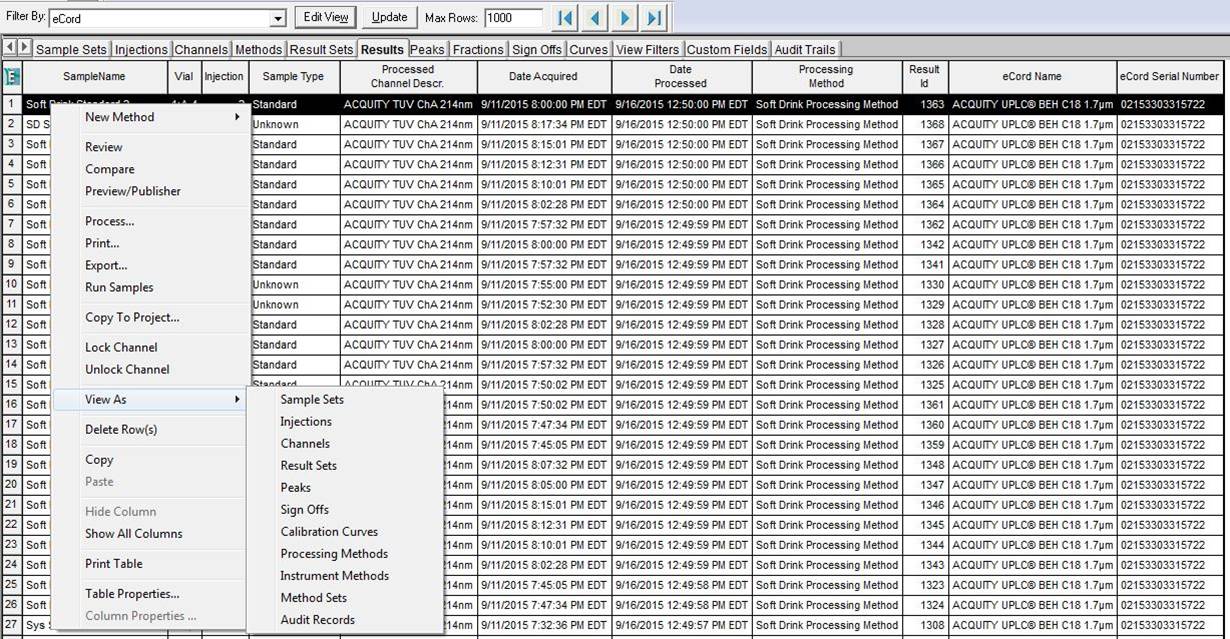How do you review information linked to a result? - Tip6
Article number: 50062
OBJECTIVE or GOAL
There are times when you may be asked to explain how a result was generated. Some of the questions that may come up include:
- What instrument parameters were used to collect the data?
- Which column was used?
- Who generated the result?
- What processing method and/or calibration curve was used to generate the quantitative result?
- Was the result electronically signed off?
- What audit records are there for this result?
ENVIRONMENT
- Empower
PROCEDURE
Tip: Refer to the Reviewing Information Linked to Results video to help you complete this task.
- We can use a combination of the View As function (which we explored in a previous how to article) and View Filters to get to the information easily and quickly. If we right-click on a result and select View As, we see the relationships Empower Software builds. Let’s use these relationships to help answer the questions listed above.

- If you select Instrument Methods, Empower Software takes us to the Methods tab and displays the Instrument Method, which has the instrument parameters used to collect the data. Using the View Filter editor, create a View Filter called Method Details, which displays the Method Version and Method ID numbers. This insures that the view is the exact version of the method used at that time, even if the method has been modified since that date.

- If you look closely at the Results table in Figure 1, we see the eCord Name and eCord Serial Number. (Using the View Filter editor, add those fields to the table.) If you use an ACQUITY UPLC with eCord enabled columns, these fields of information are automatically populated without user intervention. If you use a non-eCord-enabled column there are default custom fields in Empower which can be used to record this information.
- If you create a View Filter to include the Acquired By and Processed By fields you can easily see who collected the data and who processed the data.

- If you right-click on the result and select View As Processing Method, Empower CDS Software takes us to the Methods tab and displays the Processing Method including Method Version and Method ID.

- If you select Calibration Curves the software takes you to the Curves tab and displays the Calibration Curves along with their IDs.

- If you create a View Filter to include the Number of Sign Offs, you can quickly see if the Result has been signed off.

Alternatively, you could right click on the result and select Sign Offs and Empower takes you to the Sign Offs tab, where you could view additional information.

- If you select Audit Records Empower takes you to the Audit Trails tab where you can view the audit records for this result.

You can see that using a combination of the View As function and View Filters gets you to the information you need easily and quickly.
ADDITIONAL INFORMATION
id50062, EMP2LIC, EMP2OPT, EMP2SW, EMP3GC, EMP3LIC, EMP3OPT, EMP3SW, EMPGC, EMPGPC, EMPLIC, EMPOWER2, EMPOWER3, EMPSW, SUP

